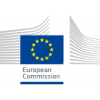GARMENT INDUSTRY WASTE RECYCLING IN ALBANIA
3 years agoExcecutive Summary
Garment industry has great potential in our country. The Industry has been raised as the biggest earner of foreign currency. This sector created about 30.000 employment opportunities in garment Industry and 40.000 in footwear Industry. This industry includes 700 large and small factories as active enterprises in the country. In 2019, this industry provided about 40 percent of country's exports worth over 800 million euro. Albania is a small country with large production resources, with a lot of interest to grow and collaborate with new customers, and the garment and footwear industry priority is to be a leader in the Balkan for Apparel Industry and Shoe production. Along with the development of this industry, the waste management of this sector has also become important. Garments waste recycling has also huge impact on our country and reflect also in our economy.
Introduction
In general every garments waste is valuable because everything is recyclable and for that we need to develop industries for textile recycling. The recycling industry effort is concerned with recycling, recycle – ability, and source reduction of both pre- consumer and post – consumer waste. The recycle industry will have also possibilities to contribute more on Albanian’s economy. Nowadays for garments product exported to EU countries, it is necessary to ensure that textile and leather materials should not contain not whether objectionable dyes and chemical but also ensure that the textile should be produced eco-friendly.
The recycling of textile waste can serve as a means of providing solutions to many economic, environmental and social issues as in polyethylene waste recycling, recycled composites, plastic composites, etc. Textile wastes arise during apparel-making processes and from the retail industry. They are the post-industrial waste. Textiles for recycling are generated from two primary sources.
These sources include:
1.Post-consumer, including garments, vehicle upholstery, household items and others.
2.Pre-consumer, including scrap created as a by-product from yarn and fabric manufacture, as well as the post-industrial scrap textiles from other industries.
Though, textile recycling has old history; in recent years it has assumed prime importance due to Fast Fashion culture in Western world which has resulted in over consumption of textiles and corresponding waste generation. Today waste recycling has become a multibillion industry. Innovations are being made in terms of development of sorting machines, design inputs, innovative high value products to make recycling. Specifically the waste recycling pattern in garments sector is needed to be analyzed technically.
The overall objectives and benefits
The study it will be focused on the condition of Albanian garment industry.
Research on garments waste recycling. This project will lead to this environmental benefits through the reuse of textile and their recycling:
- Avoided production: the replacement rate as a key factor.
- Landfill space: Textile fiber products will not decompose in the landfill. Development of additional markets: Raw materials created from recycled content generally cost less, making their use attractive and desirable to manufacturers. This, in turn, leads to the development of more markets for reclaimed fibers.
- Textile recycling also saves Energy.
- Reduces pollution: Recycling saves on energy consumption when processing. Unlike raw wool, reclaimed fibers do not have to be thoroughly washed using large volumes of water.
- Clothing and textile recycling reduces the demand for Dyes and fixing agents: This, in turn, reduces the problems caused by their use and manufacture.
The objective of this project is to determine garments waste generation rates in specific areas, to know about final products produce from garments wastes. For this purpose initially an detailed survey is conducted in a selected area.
The goals will be as follows:
waste market one tried to
- Evaluation of garments waste generation rates and minimization of garment waste: By visiting garment companies and garment waste market to analyze the waste generation rate.
- Evaluation of waste recycling rate in specific areas in Tirana and Durres.
By surveying the Mirpur jhut market area one
- Evaluation of waste recycling rate, by surveying the garment companies and market areas in Tirana and Durres to calculate the waste processing and recycling rate in those specific areas.
- Implementation of new technologies and methods for waste recycling processes.
- Production of new recycled textiles from new technology implemented in a concrete garment production company.
Environment
Erasmus+
Get Access to the 1st Network for European Cooperation
Log In
or
Create an account
to see this content
Recommended Calls for This Idea
Calls proposed by users that could work with this Idea.
recommend a call





Please Log In to See This Section